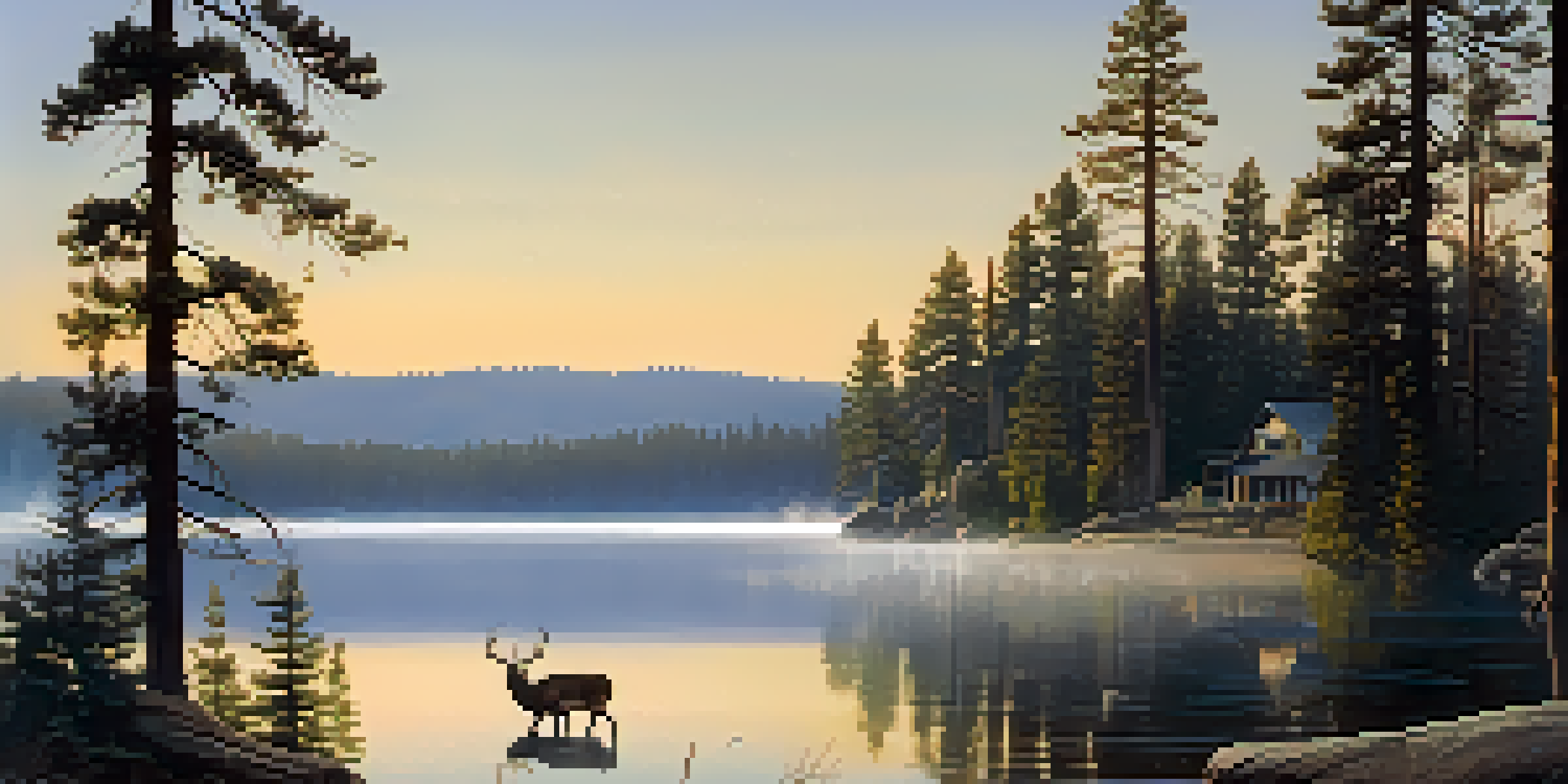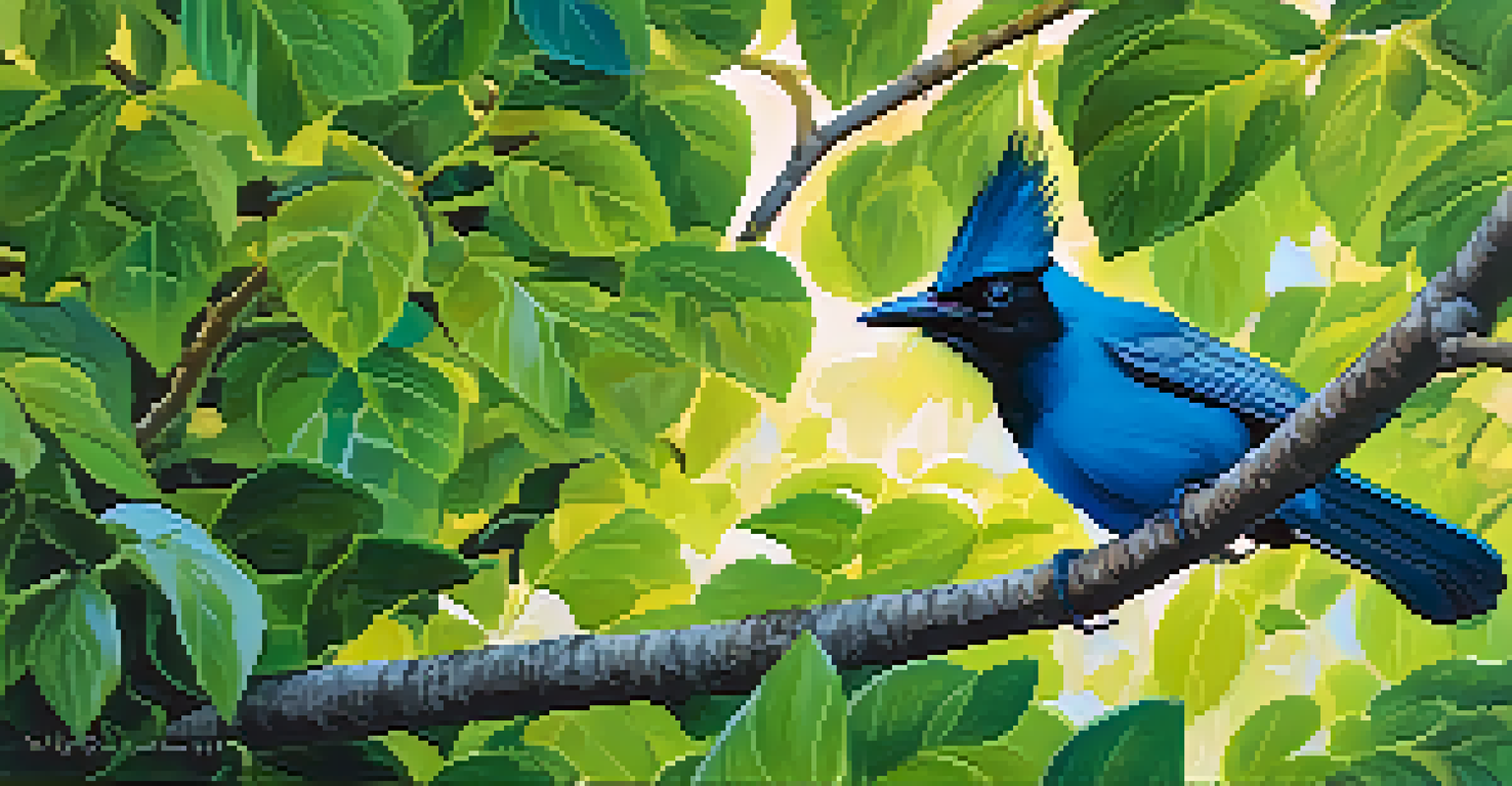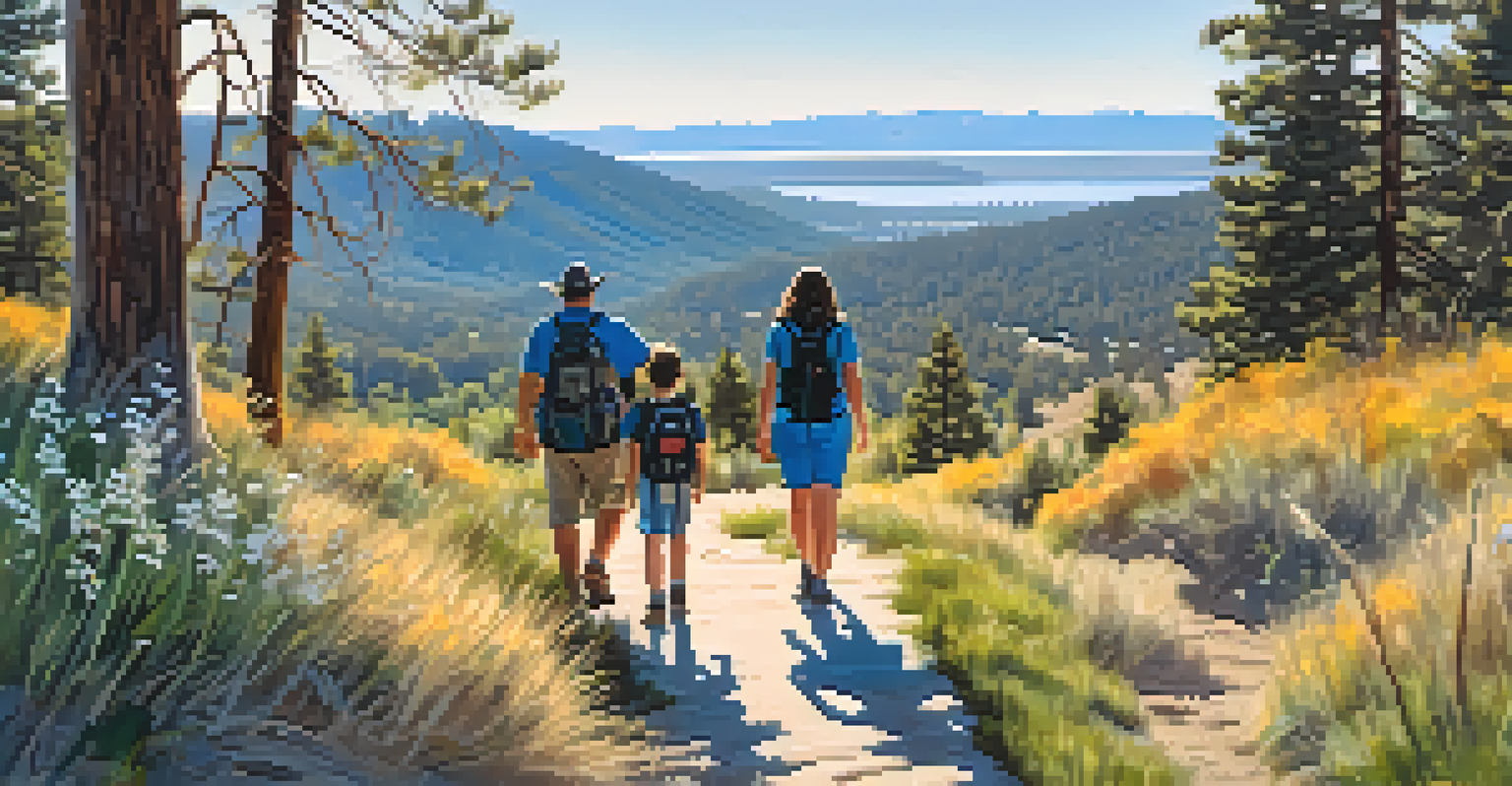Wildlife Spotting: What to Look for on Big Bear Walks

Understanding the Local Ecosystem of Big Bear
Big Bear Lake is a stunning destination that's rich in biodiversity. The area is home to various habitats, including forests, meadows, and wetlands, each supporting unique wildlife. Knowing what to expect in these environments can enhance your wildlife spotting experience immensely.
In every walk with nature one receives far more than he seeks.
For instance, the towering pines and oaks provide shelter for animals like black bears and deer, while the wetlands attract a variety of birds. Understanding these habitats allows you to know where to look and when, increasing your chances of spotting elusive creatures.
As you walk through Big Bear, pay attention to the different types of flora and fauna. Each area you explore can provide clues about which animals might be nearby, turning your hike into an exciting wildlife adventure.
Best Times for Wildlife Spotting in Big Bear
Timing can significantly influence your wildlife spotting success. Early mornings and late afternoons are generally the best times to see animals, as they are most active during these cooler parts of the day. This is especially true for larger mammals like bears and deer, which tend to avoid the heat of midday.

Additionally, certain seasons bring different wildlife sightings. For example, spring is an excellent time to observe baby animals, while fall offers beautiful foliage and active animals preparing for winter. Understanding these seasonal patterns can help you plan your walks for optimal viewing.
Explore Big Bear's Diverse Habitats
Understanding the various habitats in Big Bear can enhance your wildlife spotting experience by guiding you on where to look for different animals.
By being mindful of the time of day and season, you can transform your Big Bear excursions into unforgettable wildlife experiences. Just remember to be patient and stay quiet, as this will improve your chances of seeing animals in their natural habitats.
Essential Gear for Wildlife Spotting
Having the right gear can make a world of difference when it comes to wildlife spotting. Binoculars are a must-have for observing animals from a distance without disturbing them. They allow you to enjoy the beauty of wildlife while keeping a safe and respectful distance.
The clearest way into the Universe is through a forest wilderness.
In addition to binoculars, consider bringing a camera with a zoom lens. Capturing your wildlife encounters not only helps you remember your adventures but also allows you to share them with others. Remember to stay quiet when you take photos to avoid scaring away the animals.
Lastly, don’t forget to wear comfortable clothing and sturdy shoes. A good pair of hiking boots will keep your feet comfortable on the trails and help you navigate various terrains, making your wildlife spotting experience much more enjoyable.
Common Wildlife to Spot in Big Bear
Big Bear is home to an array of wildlife, making it a paradise for nature enthusiasts. Some of the most common animals you might encounter include black bears, mule deer, and various species of birds, such as the Stellar's jay and the American robin. Knowing what to look for can enhance your spotting experience.
Black bears are often seen during the warmer months, especially near food sources. Mule deer are more frequently spotted at dawn or dusk, grazing peacefully in meadows. Meanwhile, birdwatchers can enjoy the vibrant colors and songs of local avian species throughout the year.
Timing is Key for Wildlife Spotting
Visiting during early mornings or late afternoons and considering seasonal patterns can significantly improve your chances of seeing wildlife.
Each animal has its own unique behaviors and habitats, so take the time to learn about them before your hike. This knowledge not only enriches your experience but also fosters a deeper appreciation for the wildlife you encounter.
Respecting Wildlife and Their Habitats
As thrilling as wildlife spotting can be, it's crucial to respect the animals and their habitats. Maintaining a safe distance is essential for both your safety and the animals' well-being. Approaching wildlife too closely can cause stress and alter their natural behaviors.
Additionally, always follow local guidelines regarding wildlife encounters. Feeding or attempting to touch wild animals can lead to serious consequences for both you and the creatures involved. It's important to remember that these animals are best appreciated from afar.
By respecting wildlife and their habitats, you contribute to the preservation of the delicate ecosystems in Big Bear. Your responsible behavior ensures that future visitors can enjoy the same breathtaking experiences that you did.
Using Technology to Enhance Your Experience
In today’s digital age, technology can significantly enhance your wildlife spotting adventures. Apps like iNaturalist or Merlin Bird ID allow you to identify species on the spot, making your hikes more interactive and educational. These tools can help you learn about local flora and fauna in real-time.
Additionally, many smartphones come equipped with GPS features that can guide you along trails and mark interesting wildlife sightings. This can be particularly useful if you’re exploring less-traveled paths, ensuring that you don’t miss out on hidden gems.
Respect Wildlife and Their Spaces
Maintaining a safe distance from wildlife and following local guidelines is essential for both your safety and the well-being of the animals.
Embracing technology while remaining mindful of your surroundings can create a well-rounded wildlife spotting experience. Just remember, the key is to balance tech use with the joy of connecting with nature.
Planning Your Big Bear Walks for Success
The success of your wildlife spotting adventures largely depends on proper planning. Researching trails that are known for wildlife activity is a great start. Websites and local visitor centers can provide valuable information about the best routes and times for sightings.
Consider the length and difficulty of the trails you choose. If you’re hiking with children or less experienced hikers, select easier paths that still offer great wildlife viewing opportunities. Remember, the journey is just as important as the destination.

Finally, pack snacks and water to keep your energy up during your explorations. A well-fueled walk will allow you to stay out longer and increase your chances of spotting wildlife, making your Big Bear adventure truly memorable.